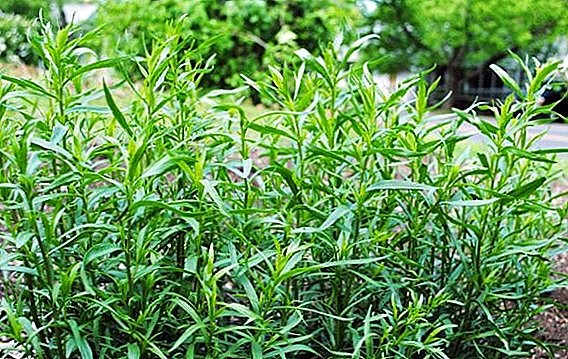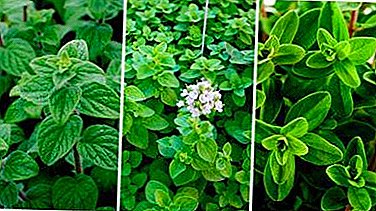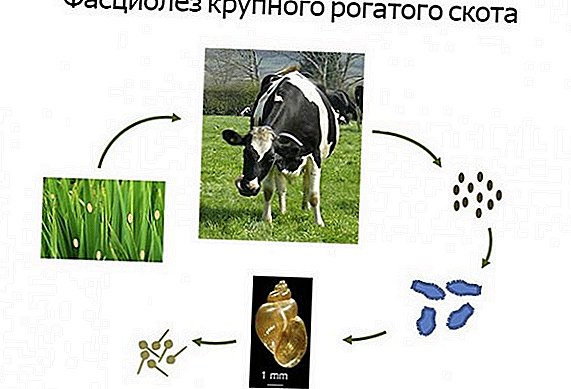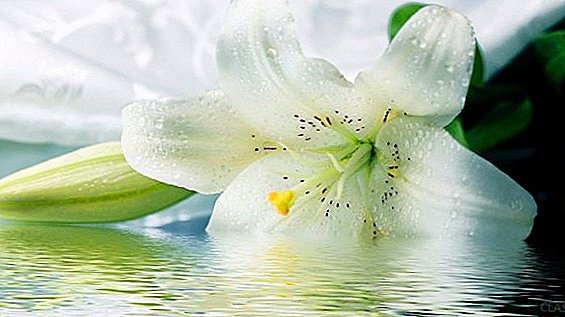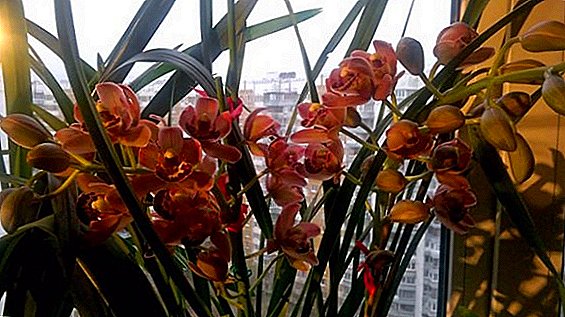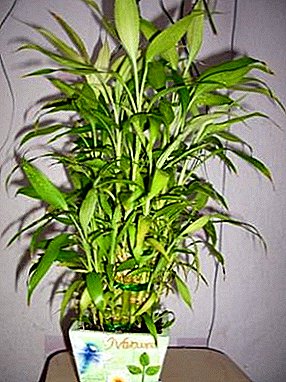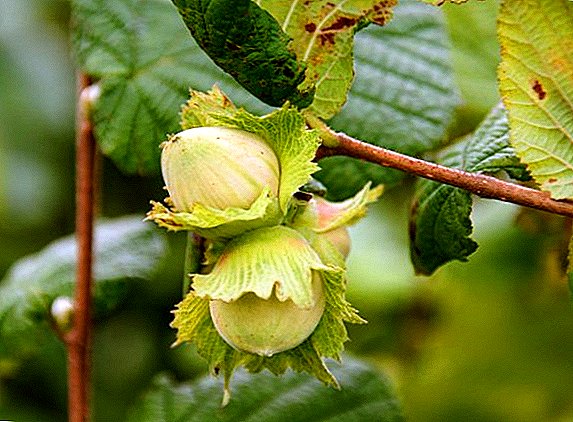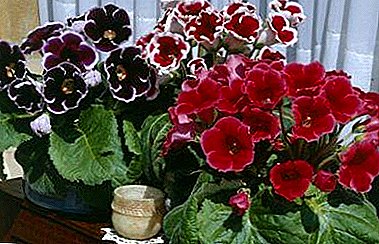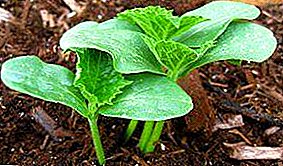
Cucumbers are a popular vegetable crop, most often grown by seedlings.
It enables the earliest possible harvest, the plants are strong, strong, resistant to diseases.
The topic of our today's article is cucumber seedlings: growing at home.
Subtleties of planting: seeds, capacity and soil
For growing seedlings it is better to use individual packaging: peat pots or pills, plastic or paper cups, special cassettes. Tanks should be small, in too voluminous pots the soil can sour.
Grown in small containers, the plants will be moved to a permanent place of residence by the method of transshipment, thus avoiding injury to the roots.
 Cucumbers prefer light, nutritious soil with neutral acidity. Purchased soil does not fit, it is poor in nutrients.
Cucumbers prefer light, nutritious soil with neutral acidity. Purchased soil does not fit, it is poor in nutrients.
Ideal: personally composed mixture of garden or turf land, old humus and sawdust. Humus can be measured by peat.
The soil is thoroughly mixed, for greater ease in it you can add perlite or vermicult. Garden soil is previously calcined in the oven or microwave, this procedure kills harmful microorganisms and larvae of insect pests. For greater nutritional value, urea, potassium salts and superphosphate are added to the soil.
How to grow cucumbers from seeds at home for seedlings? Seeds before planting are picked and wrapped in cotton fabric.soaked in warm water. In 3-4 days sprouts will appear.
If it is intended to be transplanted into open ground, the swollen seeds should undergo a hardening procedure. They are placed in the lower chamber of the refrigerator for 24-36 hours.
The prepared seeds are carefully planted in pots filled with the substrate. In each capacity 2 seeds are located. The depth of the minimum, not more than 1.5 cm. The pots are placed on a tray, sprayed with plenty of water, covered with film or glass, and then placed in heat.
We offer you a video on how to properly plant the seeds:
How to grow cucumber seedlings at home?
When the sprouts rise above the ground, the weakest are removedby cutting it off with scissors or a knife. Pulling a sprout is impossible, it can damage the roots of the remaining plant. So that the seedlings do not stretch out ahead of time, the temperature in the room decreases to 20 degrees for 2-3 days. Then it needs to be raised to 22-24 degrees.
Cucumbers don't like drafts, daily temperature drops are not useful to them either.
 Capacities with seedlings are placed in the most bright place: on the window sill of the south, south-west or southeast window or in close proximity to it.
Capacities with seedlings are placed in the most bright place: on the window sill of the south, south-west or southeast window or in close proximity to it.
In cloudy weather, it is necessary to light up fluorescent lamps. With a lack of light, seedlings are pulled out, the stems become thinner, and the leaves turn pale. Light day for seedlings lasts from 8 to 18 hours.
Express greenhouse will provide the desired level of humidity, besides the window film dispels direct sunlight.
To increase the level of humidity in the room will help household humidifier, wet towels, hanging on the batteries, as well as periodic spraying of the soil, plants and the air around them.
During the cultivation of seedlings in a container 2-3 times sprinkle the soil. In between watering soil gently loosenedtrying not to injure the roots. Dense rim formed on the surface interferes with normal air exchange.
A week before landing in the ground seedlings begin to harden. First, the window opens, after a couple of days the pots are taken out to the open air. Such walks can last several hours. Hardening is carried out in good weather, the plants must be protected from sudden gusts of wind and direct sunlight.
Watering and feeding
Cucumbers - very moisture-loving culture. With insufficient watering sprouts wither and wither. Water the plants need a dayusing only soft water: rain, boiled. The ideal temperature is 22-28 degrees.
The soil in the tanks should not dry out, but you can not flood the plants either. For watering newly emerged sprouts, it is convenient to use a teaspoon or a spray bottle. To care for the grown seedlings need a fine-mesh watering. Watering seedlings is recommended in the morning., preventing direct sunlight on wet leaves.
 When the plants unfold the first pair of these leaves, feeding is carried out. If the plants grow poorly, look sluggish and stunted, you can feed them before.
When the plants unfold the first pair of these leaves, feeding is carried out. If the plants grow poorly, look sluggish and stunted, you can feed them before.
The most suitable option is diluted complex mineral fertilizer intended for seedlings. You can make a nutritional mixture on your own by including urea, potassium sulfate and superphosphate.
Gardeners who prefer organic use bred mullein or bird droppings (1 part to 10 parts of water). When feeding, it is important to ensure that fertilizer does not fall on the leaves. If this happens, the seedlings are washed with warm water. After feeding, cucumbers need to pour abundantly. Fertilizing planting is better in warm sunny weather., in the first half of the day.
The second feeding is carried out before planting on the beds or in the greenhouse. If mineral substances have been added to the soil when planting seeds, secondary feeding can be excluded.
Insect pests: how to protect cucumbers?
Cucumber seedlings can be attacked by pests: spider mites or aphids. As prophylaxis useful frequent spraying plants clear water or a weak solution of potassium permanganate.
Landings are inspected daily. The detected larvae are washed off with a cotton swab. In case of severe damage, spray treatment with insecticide is possible. Plants are sprayed abundantly, after 3 days the procedure is repeated. Learn more about how to deal with aphids and spider mites.
Growing cucumber seedlings at home is step by step with a photo:






Growing cucumber seedlings is an easy and exciting experience. Experimenting with planting time, lighting and feeding, you can achieve excellent results. Young plants will be healthy and strong, they will well transfer transplant to the greenhouse or to the open beds.
So, today we looked at cucumber seedlings: how to grow it healthy and strong? How to grow cucumber seedlings at home?
Useful materials
Check out other helpful cucumber seedlings articles:
- How to grow on the windowsill, balcony and even in the basement?
- Tips for growing in different containers.
- Find out the dates of planting depending on the region.
- The reasons why seedling leaves dry and turn yellow and which diseases are susceptible to?


